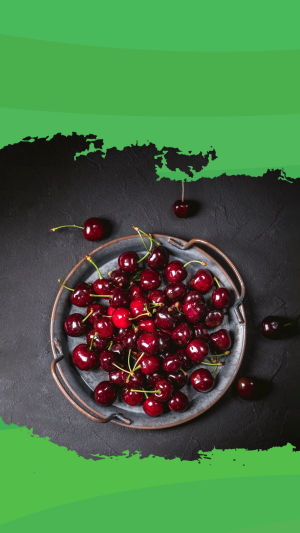Every year in late November, it is the season for cherries to ripen. If you live in New Zealand, cherries are indispensable for gatherings everywhere. The best cherries in New Zealand come from two places, Napier on the North Island and Central Otago near Queenstown on the South Island.
The Napier area has less production and usually sells out around December, so there is no opportunity to pick and eat from the orchard. The production near Queenstown is very large, and cherry-picking activities are held every year because if they are not picked, the cherries will rot on the trees.
The cherries there are big and sweet, and grow to maturity naturally, instead of being transported to the supermarket to ripen in advance, so they are a delicacy that cannot be missed.
The New Zealand cherries from Central Otago in the central Otago region of the South Island are very close to Queenstown, a famous tourist destination in New Zealand, which has the largest cherry orchard coverage area and is the most important and world-renowned cherry growing area in New Zealand.
Central Otago's distance from the sea and the rainforest belt in the Southern Alps make for an excellent climate. This is the driest place in New Zealand, with summer temperatures regularly exceeding 30C. From December to February in the summer, it is the season for the cherry trees to bear fruit.
The cherries on each tree are mouth-watering, with black and red skin, and a sweet and juicy taste synonymous with New Zealand cherries.
In addition to the delicate New Zealand red cherries, there are also precious white cherries. New Zealand white cherries are the most popular in overseas markets because they are large and sweet. However, the most attractive ones are all exported, but they cannot be bought locally in New Zealand.
In the Japanese market, the white cherries produced in New Zealand are not sold by kilograms or boxes, but by the number, which shows their preciousness and popularity.
There are several different "small varieties" of white cherries in New Zealand, of which the variety used for export is basically "Rainier". This is a breed with a history of more than 60 years, first researched by Harold Fogle of the University of Washington in the United States in 1952, and named after Mount Rainier.
It is a cross between the famous cherry varieties Bing and Van. It has thin skin, a large size, a sweet taste, plump flesh, and a smooth mouthfeel.
After Rainier cherries were introduced into New Zealand, they developed a unique New Zealand cherry quality under the unique natural conditions of the Otago region of the South Island. The Otago region has high latitudes, abundant soil nutrients, strong sunshine, and a large temperature difference between day and night.
Coupled with the careful and scientific cultivation of generations of farmers, New Zealand's white cherries are world-renowned.
Eating cherries regularly can make the skin more smooth and more moisturizing, mainly because cherries are extremely rich in iron. The content of iron in one hundred grams of pulp is 6 times that of strawberries, 10 times that of jujubes, 13 times that of hawthorns, and 20 times that of apples of the same weight, ranking first among various fruits.
Therefore, cherries are also known as "beauty fruit".
For office workers who have been working on computers for a long time, cherries also have an important function: eating cherries can relieve computer syndrome, which is a common disease in the office with back pain and dry eyes.
It should be noted that cherries are high in sugar, so people with diabetes, patients with inflammation or febrile diseases, and people with a cough should not eat them, otherwise, it will easily aggravate the disease. In addition, cherries contain a certain amount of "cyanide".
Excessive consumption at one time may cause a slightly moderate level of cyanide, so you should pay attention to the appropriate amount of cherries.





